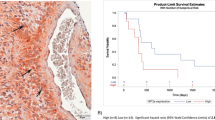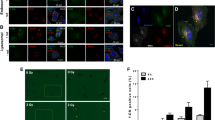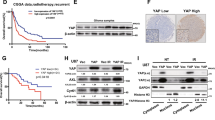Abstract
Patients with malignant gliomas have a very poor prognosis. To explore a novel and more effective approach for the treatment of malignant gliomas, a strategy that combined tumor necrosis factor-related apoptosis-inducing ligand (TRAIL) gene therapy and radiation treatment (RT) was designed in this study. Plasmid pE4-GFP was constructed by including the radioinducible early growth response gene 1 (Egr-1) promoter, and it yielded the best response with fractionated RT. Plasmid pE4-TRAIL was constructed by including the Egr-1 promoter and evaluated using U251 and U87 glioma cells. In the assay of apoptosis and killing activities, pE4-TRAIL exhibited radioresponse. pE4-TRAIL combined with RT is capable of inducing cell death synergistically. The expression of TRAIL death receptors was evaluated; which may be influenced by RT. Glioma cells with wild-type p53 showed upregulated expression of death receptors, and more synergistic effects on killing activities are expected. pE4-TRAIL was transfected into the subcutaneous U251 glioma cells in nude mice by the in vivo electroporation method. In the mice treated with pE4-TRAIL and RT, apoptotic cells were detected in pathological sections, and a significant difference of tumor volumes was observed when compared with the other groups (P<0.001). Our results indicate that radioresponsive gene therapy may have great potential as a novel therapy because this therapeutic system can be spatially or temporally controlled by exogenous RT and provides specificity and safety.
This is a preview of subscription content, access via your institution
Access options
Subscribe to this journal
Receive 12 print issues and online access
$259.00 per year
only $21.58 per issue
Buy this article
- Purchase on Springer Link
- Instant access to full article PDF
Prices may be subject to local taxes which are calculated during checkout






Similar content being viewed by others
References
Mahaley Jr MS, Mettlin C, Natarajan N, Laws Jr ER, Peace BB . National survey of patterns of care for brain-tumor patients. J Neurosurg 1989; 71: 826–836.
Hawkins CJ . TRAIL and malignant glioma. Vitam Horm 2004; 67: 427–452.
Wiley SR, Schooley K, Smolak PJ, Din WS, Huang CP, Nicholl JK et al. Identification and characterization of a new member of the TNF family that induces apoptosis. Immunity 1995; 3: 673–682.
Pitti RM, Marsters SA, Ruppert S, Donahue CJ, Moore A, Ashkenazi A . Induction of apoptosis by Apo-2 ligand, a new member of the tumor necrosis factor cytokine family. J Biol Chem 1996; 271: 12687–12690.
Ashkenazi A, Pai RC, Fong S, Leung S, Lawrence DA, Marsters SA et al. Safety and anti-tumor activity of recombinant soluble Apo-2 ligand in vivo. J Clin Invest 1999; 104: 155–162.
Walczak H, Miller RE, Ariail K, Gliniak B, Griffith TS, Kubin M et al. Tumoricidal activity of tumor necrosis factor-related apoptosis-inducing ligand in vivo. Nature Med 1999; 5: 157–163.
Gliniak B, Le T . Tumor necrosis factor-related apoptosis-inducing ligand's antitumor activity in vivo is enhanced by the chemotherapeutic agent CPT-11. Cancer Res 1999; 59: 6153–6158.
Chinnaiyan AM, Prasad U, Shankar S, Hamstra DA, Shanaiah M, Chenevert TL et al. Combined effect of tumor necrosis factor-related apoptosis-inducing ligand and ionizing radiation in breast cancer therapy. Pro Natl Acad Sci USA 2000; 97: 1754–1759.
Roth W, Isenmann S, Naumann U, Kugler S, Bahr M, Dichgans J et al. Locoregional Apo-2/TRAIL eradicates intracranial human malignant glioma xenografts in athymic mice in the absence of neurotoxicity. Biochem Biophys Res Commun 1999; 265: 479–483.
Hao C, Beguinot F, Condorelli G, Trencia A, Van Meir EG, Yong VW et al. Induction and intracellular regulation of tumor necrosis factor-related apoptosis-inducing ligand (TRAIL) mediated apoptosis in human malignant glioma cells. Cancer Res 2001; 61: 1162–1170.
Jo M, Kim TH, Seol DW, Esplen JE, Dorko K, Billiar TR et al. Apoptosis induced in normal hepatocytes by tumor necrosis factor-related apoptosis-inducing ligand. Nature Med 2000; 6: 564–567.
Lawrence D, Shahrokh Z, Marsters S, Achilles K, Shih D, Mounho B et al. Differential hepatocyte toxicity of recombinant Apo-2/TRAIL versions. Nature Med 2001; 7: 383–385.
Nitsch R, Bechmann I, Deisz RA, Haas D, Lehmann TN, Wendling U et al. Human brain-cell death induced by tumor-necrosis-factor-related apoptosis-inducing ligand (TRAIL). Lancet 2000; 356: 827–828.
Kasahara N, Dozy AM, Kan YW . Tissue-specific targeting of retroviral vectors through ligand-receptor interactions. Science 1994; 266: 1373–1376.
Hallahan DE, Mauceri HJ, Seung LP, Dunphy EJ, Wayne JD, Hanna NN et al. Spatial and temporal control of gene therapy using ionizing radiation. Nature Med 1995; 1: 786–791.
Weichselbaum RR, Hallahan DE, Beckett MA, Mauceri HJ, Lee H, Sukhatme VP et al. Gene therapy targeted by radiation preferentially radiosensitizes tumor cells. Cancer Res 1994; 54: 4266–4269.
Joki T, Nakamura M, Ohno T . Activation of the radiosensitive EGR-1 promoter induces expression of the herpes simplex virus thymidine kinase gene and sensitivity of human glioma cells to ganciclovir. Hum Gene Ther 1995; 6: 1507–1513.
Manome Y, Kunieda T, Wen PY, Koga T, Kufe DW, Ohno T . Transgene expression in malignant glioma using a replication-defective adenoviral vector containing the Egr-1 promoter: activation by ionizing radiation or uptake of radioactive iododeoxyuridine. Hum Gene Ther 1998; 9: 1409–1417.
Kawashita Y, Ohtsuru A, Kaneda Y, Nagayama Y, Kawazoe Y, Eguchi S et al. Regression of hepatocellular carcinoma in vitro and in vivo by radiosensitizing suicide gene therapy under the inducible and spatial control of radiation. Hum Gene Ther 1999; 10: 1509–1519.
Sukhatme VP, Cao XM, Chang LC, Tasi MC, Stamenkovich D, Ferreira PC et al. A zinc finger-encoding gene coregulated with c-fos during growth and differentiation and after cellular depolarization. Cell 1988; 53: 37–43.
Datta R, Taneja N, Sukhatme VP, Qureshi SA, Weichselbaum RR, Kufe DW . Reactive oxygen intermediates target CC(A/T)6GG sequences to mediate activation of the early growth response 1 transcription factor gene by ionizing radiation. Proc Natl Acad Sci USA 1993; 90: 2419–2422.
Greco O, Marples B, Dachs GU, Williams KJ, Patterson AV, Scott SD . Novel chimeric gene promoters responsive to hypoxia and ionizing radiation. Gene Ther 2002; 9: 1403–1411.
Taneja N, Tjalkens R, Philbert MA, Rehemtulla A . Irradiation of mitochondria initiates apoptosis in a cell free system. Oncogene 2001; 19: 167–177.
Pan G, O’Rourke K, Chinnaiyan AM, Gentz R, Ebner R, Ni J et al. The receptor for the cytotoxic ligand TRAIL. Science 1997; 276: 111–113.
Wu GS, Burns TF, McDonald III ER, Jiang W, Meng R, Krantz ID et al. KILLER/DR5 is a DNA damage-inducible p53-regulated death receptor gene. Nature Genet 1997; 16: 141–143.
El-Aneed A . An overview of current delivery systems in cancer gene therapy. J Control Release 2004; 94: 1–14.
Wu M, Das A, Tan Y, Zhu CJ, Cui T, Wong MC . Induction of apoptosis in glioma cell lines. J Neurosci Res 2000; 61: 464–470.
Liu SQ, Saijo K, Todoroki T, Ohno T . Induction of human autologous cytotoxic T lymphocytes on formalin-fixed and paraffin-embedded tumor sections. Nature Med 1995; 1: 267–271.
Nagata S . Steering anti-cancer drugs away from the TRAIL. Nature Med 2000; 6: 502–503.
Guan B, Yue P, Clayman GL, Sun SY . Evidence that the death receptor DR4 is a DNA damage-inducible, p53-regulated gene. J Cell Physiol 2001; 188: 98–105.
Poddevin B, Orlowski S, Belehradek Jr J, Mir LM . Very high cytotoxity of bleomycin introduced in to the cytosol of cells in culture. Biochem Pharmacol 1991; 42 (Suppl): S67–S75.
Zimmermann U . Electric field-mediated fusion and related electrical phenomena. Biochem Biophy Acta 1982; 694: 227–277.
Lohr F, Lo YD, Zaharoff AD, Hu K, Zhang X, Li Y et al. Effective tumor therapy with plasmid-encoded cytokines combined with in vivo electroporation. Cancer Res 2001; 61: 3281–3284.
Yamashita Y, Shimada M, Hasegawa H, Minagawa R, Rikimaru T, Hamatsu T et al. Electroporation mediated-interleukin-12 gene therapy for hepatocellular carcinoma in the mice model. Cancer Res 2001; 61: 1005–1012.
Mikata K, Uemura H, Ohuchi H, Ohta S, Nagashima Y, Kubota Y . Inhibition of growth of human prostate cancer xenograft by transfection of p53 gene: gene transfer by electroporation. Mol Cancer Ther 2002; 1: 247–252.
Tsurushima H, Yuan X, Dillehay LE, Leong KW . Radio-responsive gene therapy for malignant glioma cells without the radiosensitive promoter. Caspase-3 gene therapy combined with radiation. Cancer Lett 2007; 246: 318–323.
Author information
Authors and Affiliations
Corresponding author
Rights and permissions
About this article
Cite this article
Tsurushima, H., Yuan, X., Dillehay, L. et al. Radioresponsive tumor necrosis factor-related apoptosis-inducing ligand (TRAIL) gene therapy for malignant brain tumors. Cancer Gene Ther 14, 706–716 (2007). https://doi.org/10.1038/sj.cgt.7701065
Received:
Revised:
Accepted:
Published:
Issue Date:
DOI: https://doi.org/10.1038/sj.cgt.7701065
Keywords
This article is cited by
-
Flt3L in Combination With HSV1-TK-mediated Gene Therapy Reverses Brain Tumor–induced Behavioral Deficits
Molecular Therapy (2008)
-
Radio-responsive TRAIL gene therapy for malignant gliomas
Cancer Gene Therapy (2007)



